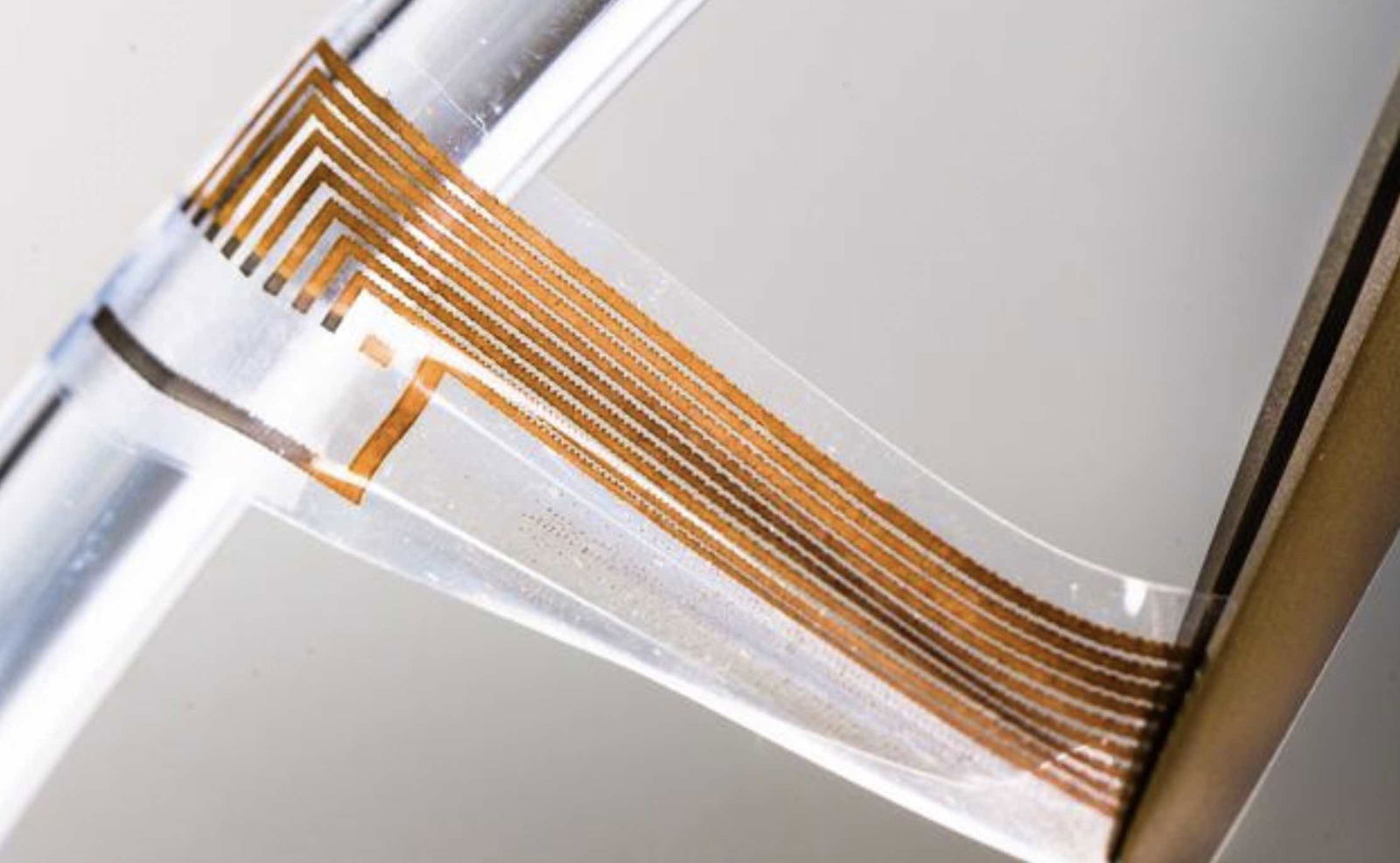The development of gold nanowires by a team of material scientists at Linköping University in Sweden may help provide the best connection between nerve cells and medical electronics ever achieved, according to new research.
The team’s work, which appears in the journal Small, revolutionizes medical technology with a novel method for producing the smallest known gold nanowires, which are protected with silicone and promise to be the most biocompatible electrodes available.
The Trouble with Electronics in the Human Body
Past studies have shown that hard electrodes can damage the soft tissue of the human body much more than softer varieties do. At 2.5 mohs, gold is a bit softer than other metals commonly used in wires, such as copper, which rates at 3.0 mohs. Every little bit helps in crafting an artificial supplement to the body’s soft and stretchable components.
“The classical conductors used in electronics are metals, which are very hard and rigid,” said Klas Tybrandt, a professor of materials science at the Laboratory of Organic Electronics at Linköping University.
Tybrandt, who led the recent research, recently explained that “mechanical properties of the nervous system are more reminiscent of soft jelly. In order to get an accurate signal transmission, we need to get very close to the nerve fibers in question, but as the body is constantly in motion, achieving close contact between something that is hard and something that is soft and fragile becomes a problem.”
A New Process for Producing Gold Nanowires
Inspiration for the new production technique came from doctoral student Laura Seufert, a member of Dr. Tybrandt’s team who, frustrated with the difficulty of growing gold nanowires from scratch, looked to the much easier production of silver nanowire first.
Beginning with a fully formed silver nanowire, the new process involves growing gold around that wire as a template and then removing the silver, resulting in the creation of a 99% gold wire. In tests conducted by the team, the wire demonstrated strong performance in sending and receiving signals from a rat nerve.
“As it’s possible to make silver nanowires, we take advantage of this and use the silver nanowire as a template on which we grow gold,” Dr. Tybrandt explained. “The next step in the process is to remove the silver. Once that’s done, we have a material that has over 99 percent gold in it.”
“So it’s a bit of a trick to get around the problem of making long narrow gold nanostructures.,”
Why Use Gold in Nanowires?
For evidence of why gold nanowires are useful, one can simply look to the polishing that goes into maintaining a set of fine silverware. That same patchy tarnishing that occurs in silver cutlery could occur in any piece of silver placed inside of the human body, as well. The silver ions that leak out of material in the process can also be toxic to humans if produced in high concentrations.
Conversely, gold and silicone have a long history of benign interaction with human physiology. While developing gold into nanowires may be novel, the metal nonetheless has a long history of use in medical technologies. Its combination of durability and biocompatibility make gold electroplating a preferred option for devices placed inside of the human body, as its properties ensure it will seldom need replacement while minimizing the chance of post-operation infections.
Solid silicone is often used in the production of various implants as well. While the FDA has some reservations about the liquid silicone used in beauty treatments, its solid form is stable and believed to be nontoxic to humans.
“We’ve succeeded in making a new, better nanomaterial from gold nanowires in combination with a very soft silicone rubber. Getting these to work together has resulted in a conductor with high electrical conductivity, is very soft and made of biocompatible materials that function with the body,” Dr. Tybrandt said.
Material scientists remain focused on miniaturization efforts for use both inside and outside of the body. Although Tybrandt’s team isn’t the only group working in this field, their efforts are among the closest to achieving realization of commercial products, as opposed to mere theoretical studies.
While the team has overcome a massive hurdle by developing a gold-based nanowire, refinements are ongoing, with concerns involving size and durability among the key factors as research continues. Further decreasing the size of the electrodes may allow the team to develop methods that involve placing the wires in closer proximity to nerve cells.
While tests show that the current products have a minimum three-year life span, any medical device that is placed inside the human body must ideally remain operable for as close to the lifespan of a human being as possible. With both goals clearly defined, silicone and gold electrode devices designed for use within the human body may indeed see more frequent use in the years ahead.
Ryan Whalen covers science and technology for The Debrief. He holds a BA in History and a Master of Library and Information Science with a certificate in Data Science. He can be contacted at ryan@thedebrief.org.

